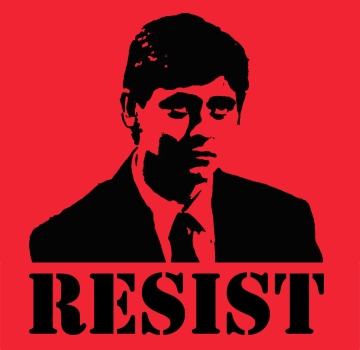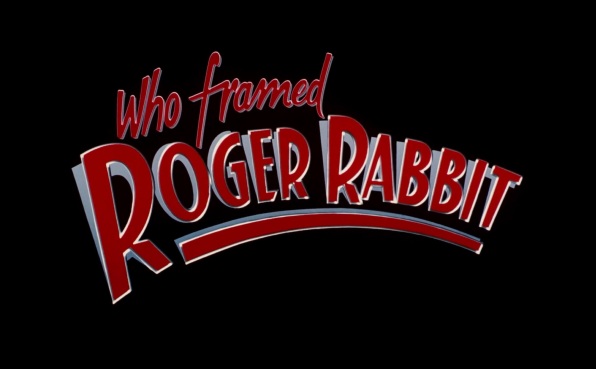
“Eddie, I could never hurt anybody. My whole purpose in life is to make people laugh!”
Such is the tenet of the Toon, a race of beings that exist alongside humans in Robert Zemeckis’s 1988 classic Who Framed Roger Rabbit. In the alternate world it presents, toons are not just drawings put to film, they are living actors working in Hollywood studios during the Golden Age of Animation.
And they’re total theater people. You think your co-worker Doris is a drama queen? Wait ’til you get a load of the toons.
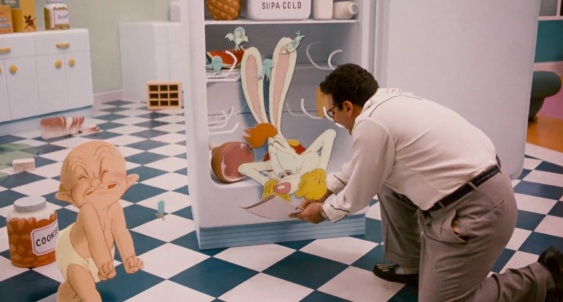
Toons live to perform, and even when the cameras are off, they can’t resist an opportunity to pose, show off, or pull a comical gag. It is their raison d’être, and studio owner R.K. Maroon has turned this desire into big showbiz bucks.
Trouble is one of his biggest stars, Roger Rabbit, can’t keep his mind on his work lately, because of rumors that his wife, Jessica, is cheating on him. Seeking to put the issue to rest, Maroon hires Eddie Valiant, a P.I. specializing in toon cases, to snap some pics of Jessica in flagrante delicto.
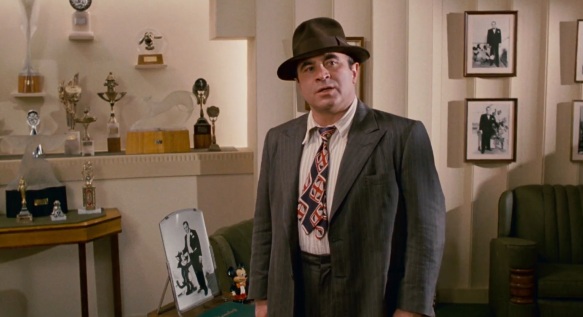
Valiant, whom Bob Hoskins infuses with a hard-boiled mix of toughness, fury, and curiosity, has a lot of hurts. Most of them involve his brother Teddy, with whom he shared a very close bond. The Valiant boys grew up sharing three careers: first as circus clowns, then as police officers, and finally private detectives. Their unique mixture of talents brought them great success at handling toon investigations.
Then, Teddy’s murder at the hands of a particularly evil toon shattered everything. Eddie has since become a bitter drunk who is distrustful of toons, especially when their antics put humans at risk.
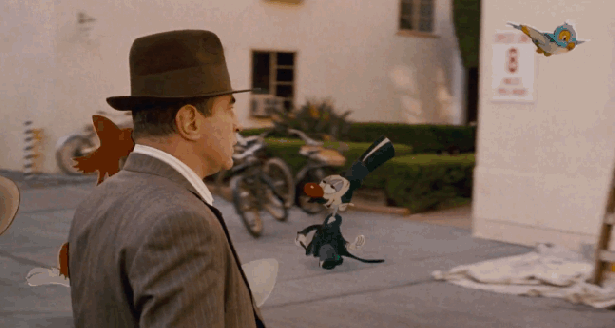
One of the rules of Roger Rabbit’s world is that toon logic, while entertaining in controlled conditions, is quite hazardous when unchecked. Since toons simply can’t help themselves when it comes to dramatic showmanship (and since they come out of their own scrapes without so much as a bruise), they often endanger and harm humans inadvertently.
To wit: I love the look of horror on Valiant’s face when Donald Duck lights a cannon in a nightclub, for no other reason except to show up that uppity Cayuga who’s hogging the spotlight. Insurance rates must be sky-high in Roger Rabbit’s world.
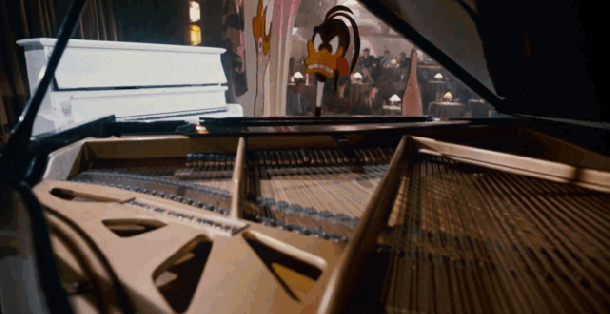
Anyway, Valiant follows Jessica to her moonlighting gig at this club, and photographs her in the act of playing “pattycake” with another man. The Lothario: Marvin Acme, a practical gag manufacturer and the owner of Toontown, an animated otherworld that rests next door to Hollywood.
Roger is not pleased. He vows to Valiant that he and Jessica will be happy again one day, and then smashes through a window to disappear into the night. This scene is so film-noir it’s not even funny. Actually, scratch that; it’s quite funny, but the point still stands: here we have three major film-noir archetypes, but they’re all just slightly askew. It’s a lot of fun to have a scene out of Chinatown play out with an animated rabbit at its center.
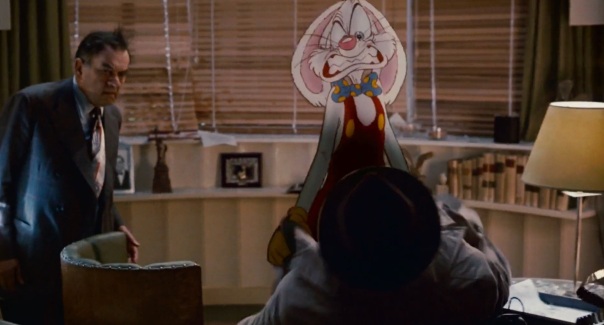
The following morning, Valiant is awakened by his former LAPD pal Lieutenant Santino, who informs Valiant that the rabbit has “kacked” Acme by dropping a safe on his head.
Despite the painful similarities between Acme’s murder and the murder of Teddy, (the difference being that Teddy had a piano dropped on his head), the shocked Valiant can’t quite accept that Roger Rabbit could be capable of such an act. He attempts to swipe a bit of evidence from Acme’s body when he’s caught and admonished by the ghastly Judge Doom.
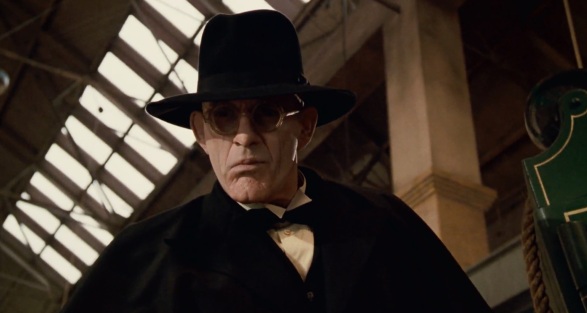
Doom is played by Christopher Lloyd, with a stern stiffness that implies he is not a man to be swayed. He has no patience for silliness, but he loves dishing out a slow punishment.
“Since I’ve had Toontown under my jurisdiction, my goal has been to rein in the insanity, and the only way to do that is to make toons respect the law.”
To this end, Doom has built an impressive system of enforcement. First, he has the Toon Patrol: five mobbed-up, zoot-suited weasels who are also — naturally — skilled rabbit hunters. I love these guys.
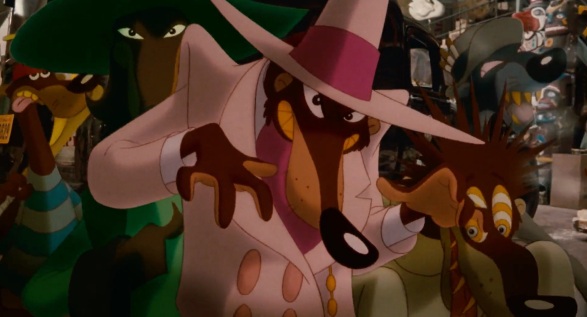
In early scripts, there were seven weasels, so that the bad guys would appear as a dark parody of Snow White and the Seven Dwarfs. The five that remain post-edit are still memorable, though. They’re led by Sergeant Smartass, who’s voiced by none other than David Lander — yep, Squiggy — and he does a terrific job, with a high, drawling voice that spews malapropisms.
Then you’ve got Greasy, Wheezy, Psycho, and Stupid, characters who don’t say much, but who suffer little for it. My favorite is Psycho, the one with the straitjacket and the straight razor, not to mention the crazy eyes and the crazier laugh.
Doom’s other weapon is the deadly Dip — a hot cocktail of paint thinners traditionally used to clean animation cels — which he lords over the toons to keep them in line. According to Santino, the Dip is the only known way to kill a toon completely, and in a chilling moment that reminds us that Roger Rabbit is no Disneyland circle-jerk, Doom puts on a sadistic demonstration:
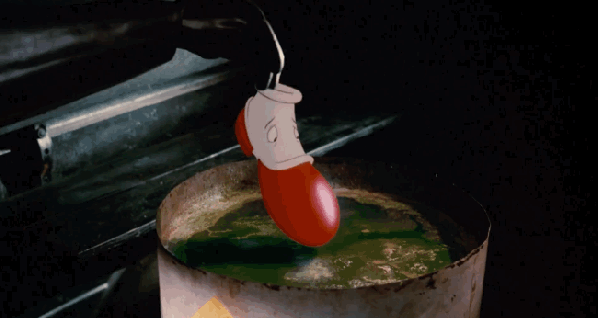
“That’s one bad shoe, eh, boss?”
The message is clear: Judge Doom is champing at the bit to turn Roger into a fast-track execution. Yeah, nothing suspicious about that.
Now pardon me while I have a strange interlude, but the Dip raises a lot of questions about the nature of toon mortality. If a deep-dunk in Dip is the only way a toon can be killed, why are the toons always so afraid of guns in this movie? Wouldn’t a gunshot simply cover them with an easily-washed layer of soot? And what about death from laughter? In a desperate moment, this ironic method of passage saves Valiant’s life, so is death from laughter a official “second” way to kill a toon? A way that Santino didn’t know about?
Who knows. And here’s a better question: who cares? As with Zemeckis’s other film jewel, the Back to the Future series, we’re better off not delving too deeply into the logic. Let’s get back to the movie.
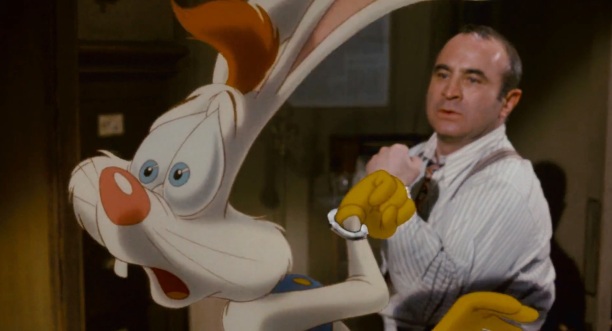
Valiant returns to his office to find Roger waiting for him there. Roger insists that he’s innocent, but Valiant wants nothing to do with him. When the Toon Patrol arrives at his door, however, Valiant’s compassion wins out. Shootouts, bar fights, and car chases ensue.
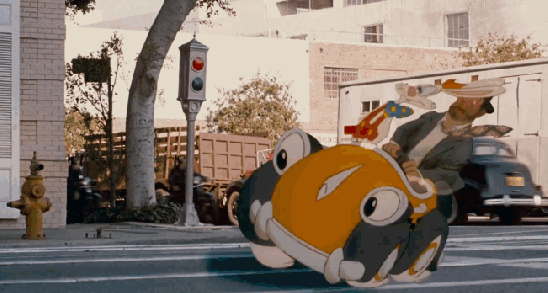
Pieces of the plot drift in thanks to Jessica, Roger’s co-star Baby Herman, and Valiant’s sometime girlfriend Dolores, and a beefy conspiracy starts to shape up: something involving the Los Angeles streetcar service, a mysterious corporation called Cloverleaf Industries, and the ownership of Toontown.
It nearly comes together when Valiant makes a play to get the truth out of Maroon, but the cartoon-maker gets smoked before he can talk, seemingly by Jessica!
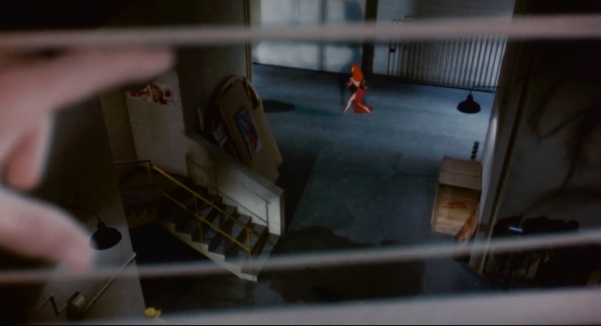
Valiant pursues Jessica, but she disappears into Toontown. Valiant hits the brakes, having frozen up at the prospect of returning to the place where his brother was killed.
Now, I apologize for this, but I need to pause in my synopsis so that I can explain something about the Ultimate Top Cartoons.
All of my favorite films have a Moment. Most of the Ultimate Top Cartoons have a few of these Moments, but don’t let that fool you: they are really very scarce.
What I’m describing is a Beautiful Moment, when every element of a particular shot, or series of shots, comes together in an absolutely perfect way. I detailed one of these moments in my recent review of Mister Magoo’s Christmas Carol. The Beautiful Moment never fails to choke me up and make me want to cry like a pup. It doesn’t matter how many times I’ve already seen it, either.
Now, here’s the weird thing: while the Moment usually arrives at some critical or symbolic point in the plot, my admiration is always on a completely different level, usually a technical one. I’m not just marveling at the effect, I’m marveling at the creativity and the construction.
There are many Beautiful Moments in Who Framed Roger Rabbit, but this one’s my favorite: Valiant, thinking he’ll need some Dutch courage to head into Toontown, stops and has second thoughts. He dumps his bottle of Wild Turkey out on the street, and then, in a gesture of ultimate rejection, he heaves the empty bottle into the sky. Then he fires at it with his toon revolver, and…well, look.
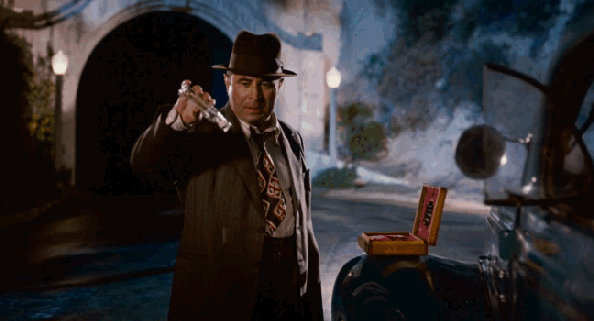
Now, that, folks…is FUCKING AWESOME.
I know it’s missing the audio that makes it complete, but look at it! Look, and consider everything that’s happening: the camera swoops into the sky, closes on the toon bullet as he eyes his target, and then pulls back again to allow the gracefully spinning whiskey bottle to enter frame from the right. Then the bullet, being a toon, doesn’t merely pass through the bottle, he disintegrates it in the most over-the-top way imaginable. How did they even conceptualize something like this? I…I need to go wash my face.
Anyway, Eddie’s visit to Toontown has to be one of the most surreal experiences in cinema. A YouTube commenter likened the Toontown tunnel to a DMT breakthrough, and he’s probably not far off.
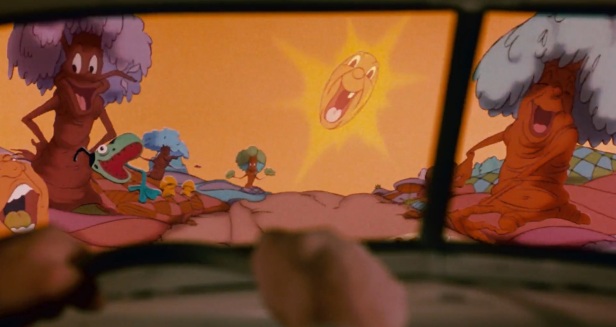
Everything in Toontown occurs like it’s part of some gigantic production. The inhabitants are constantly in action, playing out the same scenarios that are typically written for them. What’s more, toon logic applies to everything: if you bump your skull in Toontown, birdies will fly around your head. If you walk off a high ledge, you won’t fall until you look down. Your shadow will talk to you. Things like that.
Also, expect lots of cameos.
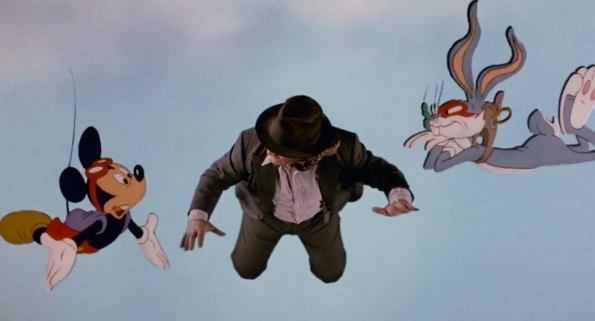
Valiant eventually tracks Jessica into an alley, but she saves him from getting the Maroon treatment by shooting the real killer, Judge Doom. Through a few unfortunate accidents, Doom gets the drop on our heroes, and drags them all to the Acme factory so he can gloat about his master plan.
Turns out that Doom wants to possess Maroon Cartoons, the Acme Factory, and Toontown, so that he can level them all and construct the first Los Angeles freeway. Yeah, that’s the plan. I’m pretty sure it’s another joke on Chinatown, but the movie plays it pretty damn seriously, and it comes off as a little confusing.
Thankfully, it’s just another one of those “who cares?” moments, because the rest of the film is insanity. Reviving his inner clown, Valiant exterminates the weasels one by one to the tune of “Merry Go-Round Broke Down.”
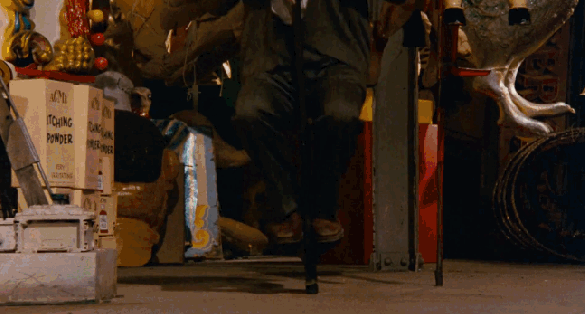
Then he has to duke it out with Doom, who reveals himself to be the same demoniacal toon monster who killed Teddy!
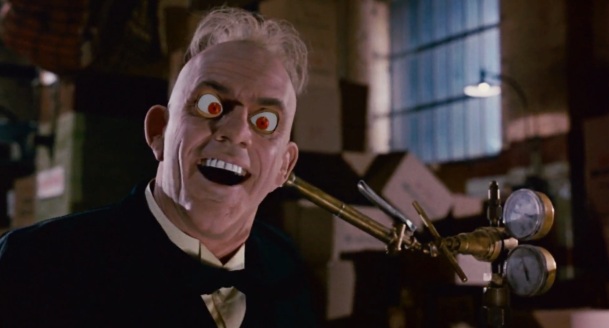
Well, it’s a partial revelation. Honestly, this is the weakest part of the movie, and I would have much preferred to see the full monster, but Lloyd does the best he can. I do like his buzzsaw arms and anvil hands, however.
I don’t think it’s much of a spoiler to say that all ends well, that everybody lives happily ever after, and that you’ll be ready to go do something else by the time the credits roll. If you look carefully, you’ll see a slight drop in the animation quality too, as though the artists themselves were exhausted by this point.
It is nice, however, to see the sudden convention of characters as they gawk at the disaster area that Acme’s factory has become. As they sing us off, there’s a pleasant shared goodbye from Tinkerbell and Porky Pig that always gives me a little chill. If only the studios would unite for crossovers like this more often!
So, to hear me tell it, Who Framed Roger Rabbit is a top-heavy film with a weak plot that runs out of steam by the end. But can anyone really fault it for that? It clearly wasn’t made for deep critical analysis. It was made to celebrate the Golden Age of Animation, to introduce us to a new cast of cartoon characters with a slightly dark edge, and to give our imaginations a jolt by offering an alternate viewpoint on beloved animated worlds. Sure, it took an army of artists and technicians to make it happen, and not all of it looks great anymore, but the terrific performances, wild soundtrack, and bold direction make Roger Rabbit a one-of-a-kind wonder.
A coda: I’ve read some reviews online that berate this movie for portraying classic cartoon characters in an “inappropriate” way. I’m not talking about Baby Herman slapping ladies on the ass, either. I’m talking little things, like, “Donald Duck would never use a cannon on someone like that!”
I find this humorous, because anyone who would seriously make a claim like this must have difficulty separating fantasy from reality, and you’d think a person like that would rather buy into the movie where fantasy and reality collide believably!
